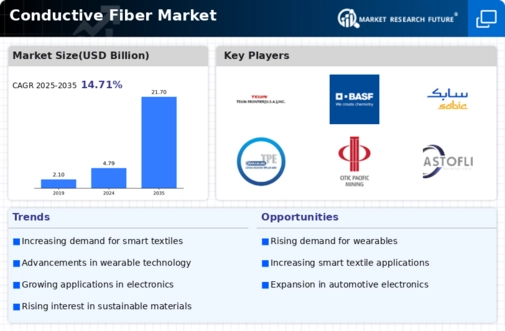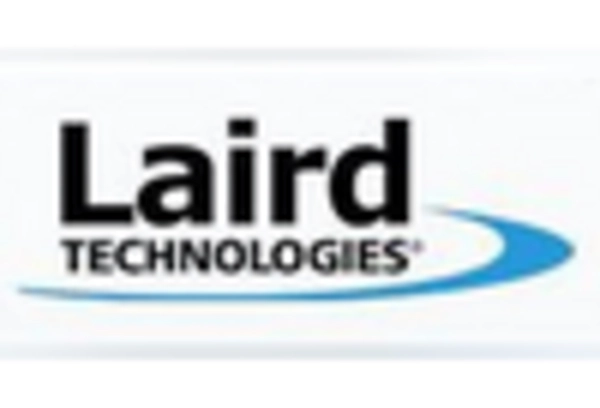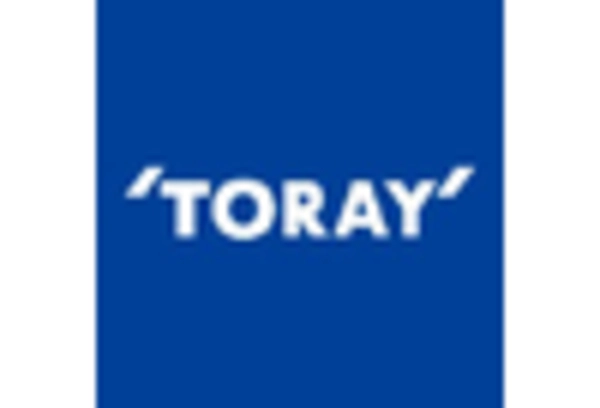Advancements in Smart Textiles
Innovations in smart textiles are driving the Global Conductive Fiber Market Industry forward. These textiles integrate conductive fibers to create fabrics that can monitor health metrics, respond to environmental changes, and enhance user experience. The integration of conductive fibers in clothing for applications such as temperature regulation and moisture management is gaining traction. As the market evolves, it is anticipated that the industry will grow to 21.7 USD Billion by 2035, reflecting a compound annual growth rate of 14.7% from 2025 to 2035. This growth indicates a robust interest in multifunctional textiles.
Rising Demand for Wearable Technology
The Global Conductive Fiber Market Industry experiences a notable surge in demand due to the increasing popularity of wearable technology. Devices such as smartwatches and fitness trackers require conductive fibers for seamless functionality, enabling features like heart rate monitoring and activity tracking. This trend is projected to contribute significantly to the market's growth, with the industry expected to reach 4.79 USD Billion in 2024. As consumers seek more advanced wearable solutions, manufacturers are likely to invest in innovative conductive fiber technologies, further propelling market expansion.
Environmental Sustainability Initiatives
Environmental sustainability initiatives are becoming a crucial driver for the Global Conductive Fiber Market Industry. As consumers and manufacturers alike prioritize eco-friendly materials, the demand for sustainable conductive fibers is on the rise. Innovations in biodegradable and recyclable conductive materials are gaining traction, aligning with global efforts to reduce environmental impact. This shift not only addresses consumer preferences but also encourages manufacturers to adopt sustainable practices, potentially leading to a more responsible and resilient market. The emphasis on sustainability may influence future product development and market dynamics.
Growing Demand for E-Textiles in Healthcare
The healthcare sector's growing demand for e-textiles is significantly influencing the Global Conductive Fiber Market Industry. Conductive fibers are increasingly utilized in medical garments that monitor vital signs, providing real-time data to healthcare providers. This application enhances patient care and enables remote monitoring, which is particularly beneficial in managing chronic conditions. As the healthcare industry embraces these innovations, the market is poised for substantial growth, reflecting the increasing integration of technology in medical applications and the potential for improved patient outcomes.
Increased Investment in Research and Development
The Global Conductive Fiber Market Industry is witnessing increased investment in research and development as companies strive to enhance the performance and applications of conductive fibers. This focus on innovation is likely to yield new materials and technologies that improve conductivity, durability, and flexibility. For instance, advancements in nanotechnology and polymer science are paving the way for the development of superior conductive fibers. As a result, the industry is expected to experience sustained growth, driven by the introduction of cutting-edge products that meet diverse consumer needs.

















Leave a Comment